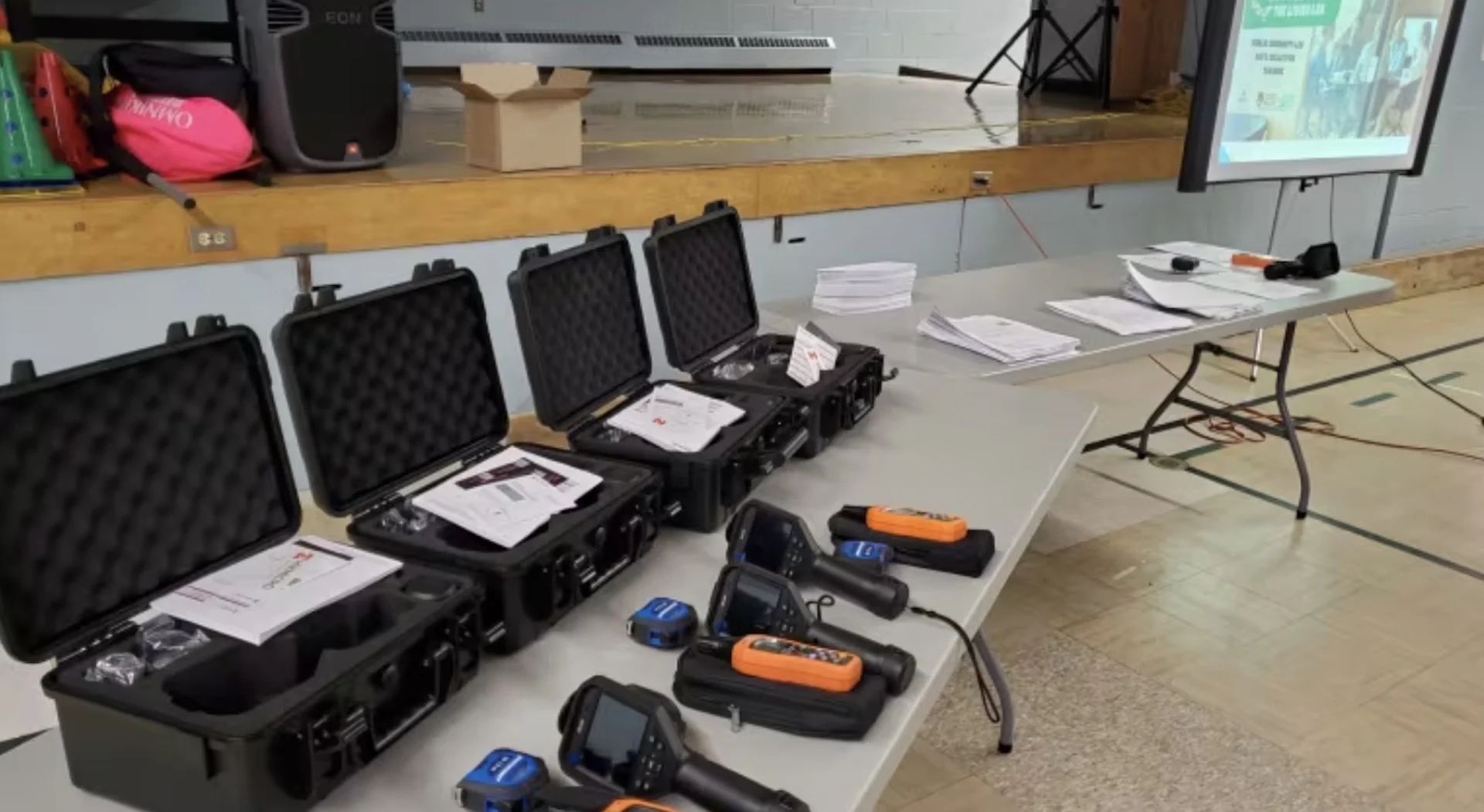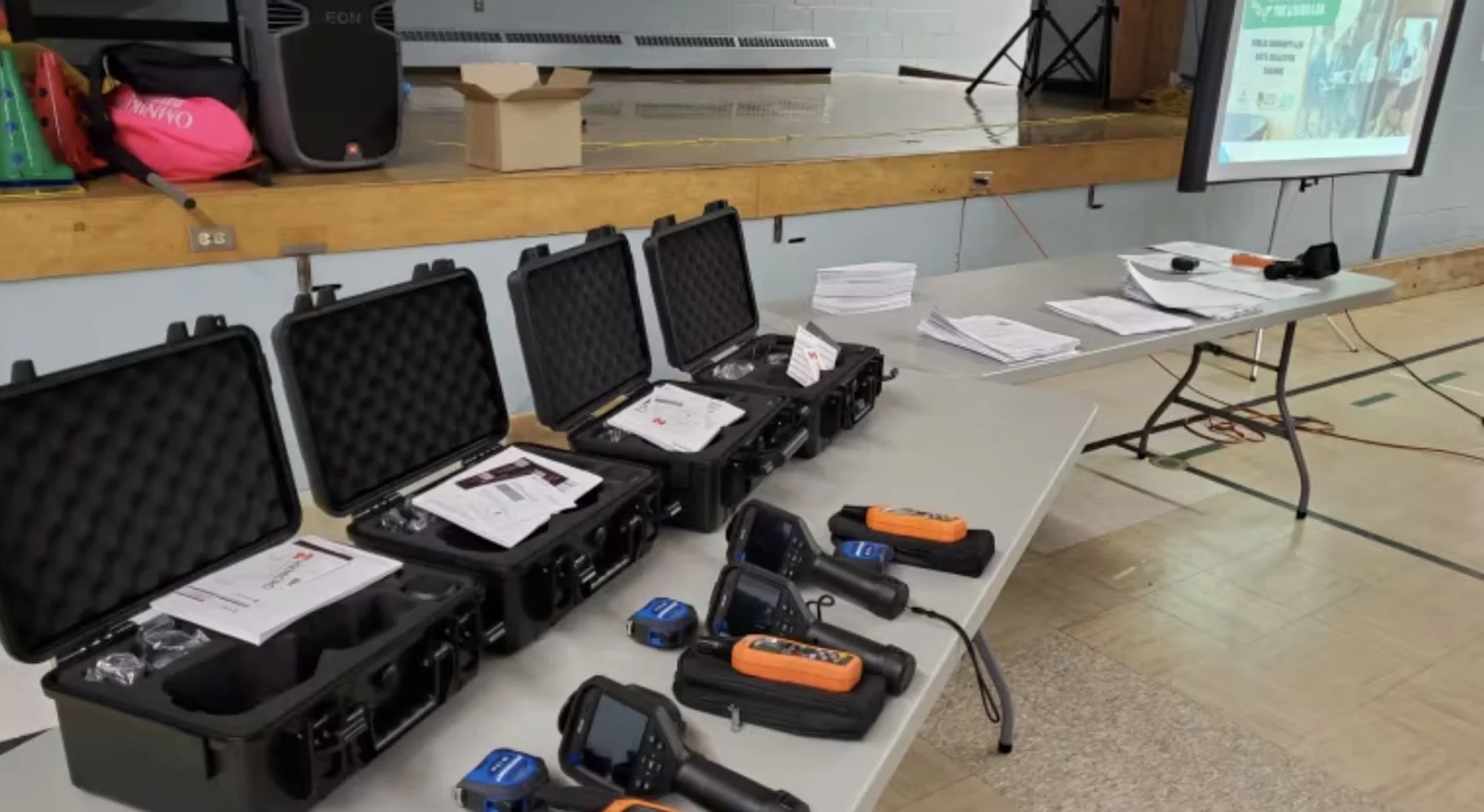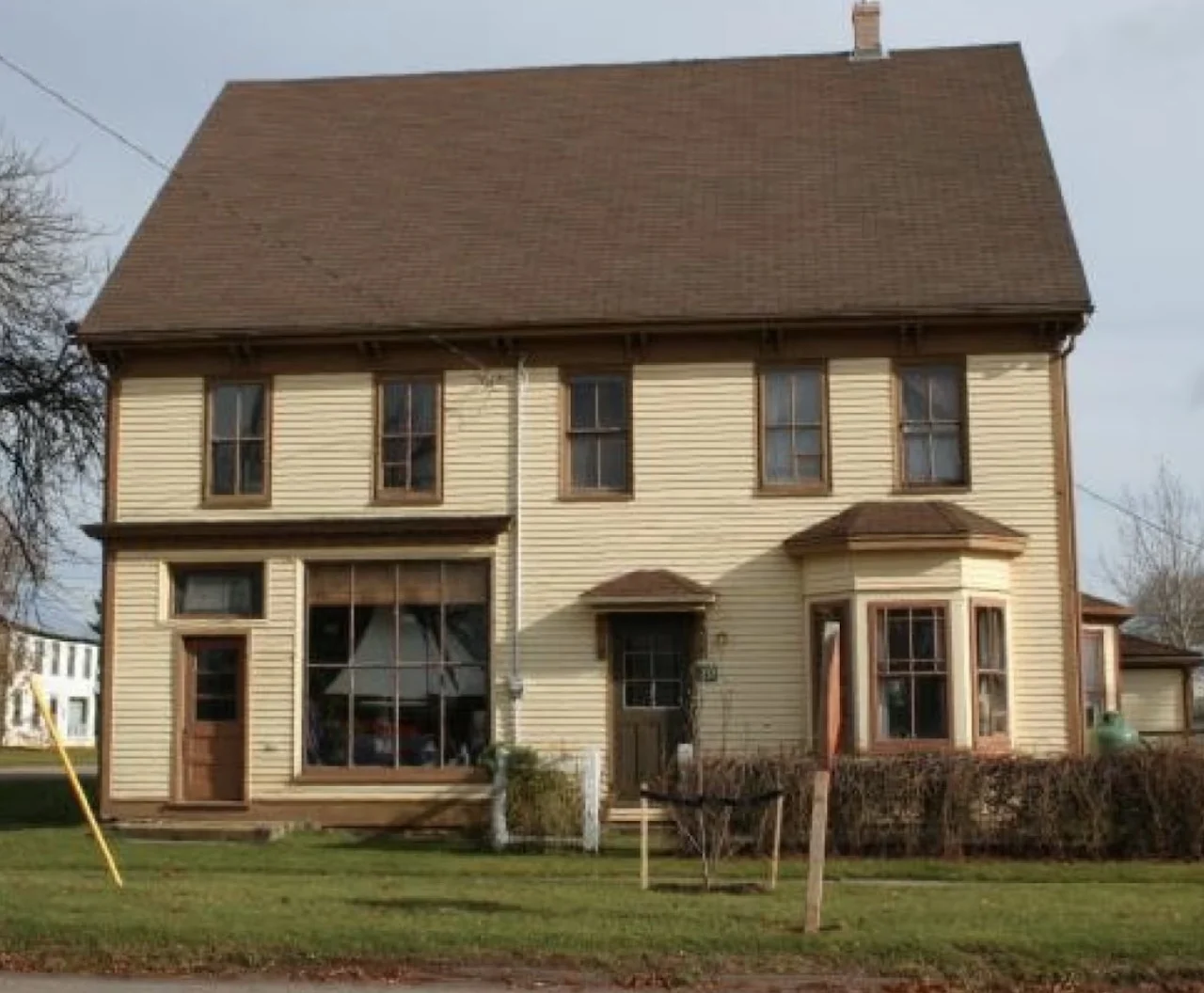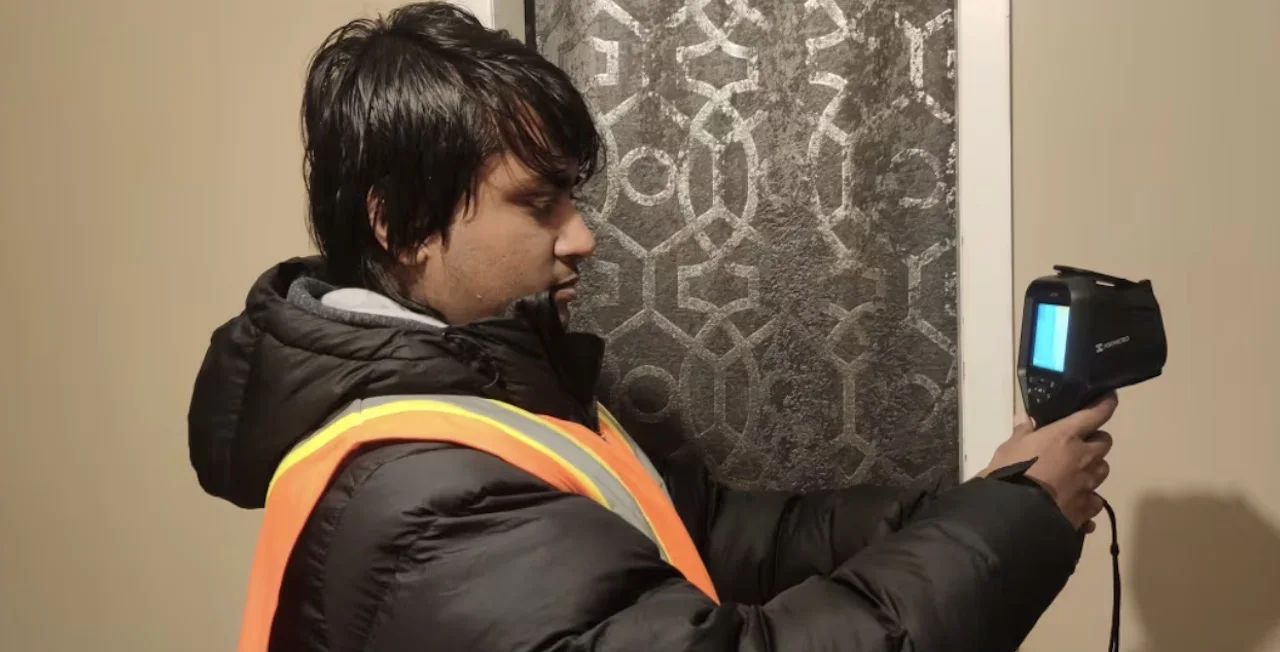
Citizens armed with infrared cameras hope to help P.E.I. town cut emissions
Residents and business owners in Georgetown, P.E.I., are being enlisted to help their town become climate-neutral.
Researchers at the University of Prince Edward Island (UPEI) have asked locals to take pictures of their buildings using infrared cameras, which capture heat leaks, as well as with humidity-measuring hygrometers.
SEE ALSO: How regenerative farming could help Canada meet its new emission targets
The Faculty of Sustainable Design and Engineering team will loan the high-tech equipment to participants for free.
The data is being collected this month in a new survey, part of the researchers efforts to help Georgetown become a net-zero community — meaning a municipality that reduces at least as many carbon emissions as it creates.
The project is being led by UPEI working with community volunteers its researchers call "community champions," who are helping get the word out throughout the community.

Professor Kuljeet Grewal says that his team is trying to get up to 350 buildings in Georgetown to participate by the end of March. (Victoria Walton/CBC)
"We will be seeing how much energy each house or each building in Georgetown is consuming," said Kuljeet Singh Grewal, an assistant professor leading the project.
Two of Grewal's graduate students are in Georgetown overseeing their survey. They hope to collect data from at least 300 to 350 buildings in Georgetown before the end of this month, which will be used to build a computer model to simulate the town's energy consumption patterns.
"Some houses are built in [the] 1800s," Grewal said. "Some are maybe very recent, and some are renovated.
"There's so much variability in building stock, so first we want to identify what is the existing insulation level."
The path to net-zero
Georgetown's journey to becoming certified as net-zero on emissions began last Oct. 5, when the province's Department of Environment, Energy and Climate Action announced it would be P.E.I.'s first carbon-neutral community by 2027.
As part of efforts to hit that ambitious goal, the UPEI researchers will look for ways Georgetown could reduce emissions and improve energy efficiency.

(Contributed to CBC)
"Sometimes people ask, 'Why Georgetown?' said Grewal. "Georgetown is a scalable town. This is a pilot ... in that way, future assessment projects will be much more rapid than this."
But the project team aren't going it alone. So far, they said, four members of the community have stepped forward. Researchers hope is those citizens can each recruit another 15 residents in the town of less than 550 people.
"That's the beauty of Georgetown," Grewal explained. "It's a small community and people know each other, and that's what we want to capitalize on."
Community-led collection
The community champions aren't just recruiting other participants, however; they're also learning to use the equipment themselves.
Therese Mair, a schoolteacher in Georgetown, has lived there most of her life. She told CBC she learned a lot of new things about her own house, which was built in 1895, when the UPEI researchers came to survey it as part of the net-zero initiative.
"I found out how drafty my house is," Mair said. "It was really eye-opening to know.
"The heat loss from my windows was a lot more than I expected, so I can already tell where I need to make some changes."

Community champion Therese Mair says the survey helped her find drafty areas in her Georgetown home, which was built in 1895. (historicplaces.ca)
It was after that that she decided to get involved more deeply in their efforts as one of their community champions.
"It's really important for the study to assess older homes, and especially seniors in older homes," she said. "[They] will need support ... to make their houses more efficient and warmer for them to live in — without being so expensive to heat."
One step closer
Although the UPEI survey is still in its early stages, Mair said she hopes her fellow Georgetown residents will be inspired to take part in their town's ambitious targets.
"The possibilities are exciting," she said. "I think everybody's wondering ... is it possible that Georgetown could become net-zero?"
The tools being used for the survey may sound high-tech, but they're surprisingly easy to learn to use, Mair and Grewal agreed. There's a tutorial video online residents can watch about how to collect the needed data.
"It's just clicking a photo with your phone camera," Grewal explained. "But this photo is more colourful than a camera photo, because it is thermal imaging.

Researchers are doing surveys of Georgetown homes and businesses, and recruiting community champions to do the same. (Contributed)
"So you will see different colours: If any surface is too hot then it will show as red; if some surface is cold it will show as blue."
Grewal said taking the survey takes about 30 to 45 minutes, including taking a few photos each of the ceiling and floor, exterior walls, attic and basement. Then participants fill out some other information about their home such as when it was built, how it is used throughout the day and what appliances are running.
For residents hoping the data could help find inefficiencies in their homes, they'll have to wait to see if there's funding available for any renovations, or pay out of pocket. But for Mair, it'll all be worth it in the end to know she contributed.
"The cost of everything being so much, and the threat of climate change, I think we all want to do what we can to make this community as net-zero as possible" she said. "Not just our community, but the whole Island.
"We all want to do our part to meet the future as best we can."
WATCH: Canada’s peatlands: an increasingly threatened carbon sink
Thumbnail was contributed to CBC.
The story was originally written by Victoria Walton and published for CBC News.
